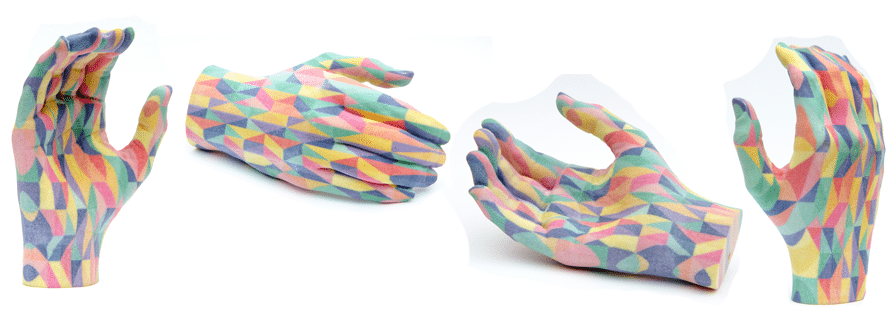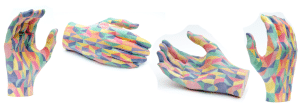William Pang
For many centuries, surgery was treated as a craft performed by barbers. In medieval times, barbers had an expanded scope of practice in an array of surgical procedures that would later cement the foundation of modern surgery. The surgical aspect was not perceived to be on the same level of prestige as medicinal treatments for most of history. Today, medicine is branched between the less invasive medical methods and the more invasive surgical methods. The sharp contrast that once existed between surgeons and physicians has slowly converged into a harmonious relationship, where one could not exist without the other.
INCEPTION OF BARBER SURGEONS
The early versions of the Hippocratic Oath cautioned physicians from practicing surgery due to their limited knowledge on its invasive nature. Barbers who had a knack for handling sharp instruments such as scissors and razors used to assist monks in bloodletting for the sick. Although in 1163, Pope Alexander III issued a decree that prevented clergymen from shedding blood, citing it as incompatible with their role in society.3 Soon, the craft of bloodletting became ingrained in the repertoire of barber surgeons.
During the 14th and 15th century, the Black Plague wiped out the majority of university trained physicians, thereby, creating great demand for barbers and their surgical procedures. “Flying Barbers” sprang up from town to town, offering their unique services. The moniker was appropriate for their nomadic nature. A contemporary equivalent would be physicians who go abroad on medical missions to serve areas lacking proper healthcare.
Universities during the Renaissance did not provide formal education in surgery, which was deemed as a trade due to its manual nature. As a result, it was difficult to accept that surgeons were equal to real doctors. Many physicians felt that “there [was] no more science in surgery than in butchering”. Physicians would train together in medical school to receive their “Doctor of Medicine” degree while barber-surgeons trained as apprentices and took an examination to receive their diploma. This apprenticeship model is still followed today in residency programs.
As one of the larger craft guilds in London, the Barbers’ Company was in charge of regulating the trade among its barber-surgeon members. Barbers at the time provided grooming services such as shaving and haircutting, along with dentistry and bloodletting. It is interesting to see the similarities between a dental chair and a barber chair. Both have armrests, recline backwards for better ergonomics, and decompress/elevate for height adjustment. Besides barbers was another smaller group known as the Guild of Surgeons, whose members performed more invasive procedures such as castrations, lithotomy, and amputations.
In the 1540’s, barbers and surgeons joined together and formed the United Company of Barber Surgeons in order to gain credibility and political traction for their field.3 This group became dedicated to surgical treatments and dental extractions. This coalition of barber surgeons existed at the same time as the Royal College of Physicians, which consisted of the “real” doctors. The radical distinction between barber surgeons and physicians continued during the establishment of hospitals. These institutions of healing designated a specific area for physicians to practice. In contrary, while barber surgeons had to perform their trade in commercial entities, using a red and white striped pole to promote themselves.
COLORWAY OF THE BARBER POLE
The spinning colored stripes of red, white, and blue are ubiquitous to every barbershop. Its legacy originated from the rich history behind one of the most common procedures performed by barber-surgeons-bloodletting. This treatment modality involved the intentional release of blood from the patient’s vein. The rationale was that the disease, whether it was a sore throat or the plague, would drain out of the body along with the blood.7 The red symbolized the blood loss and the white represented the bandages used to blot the bleeding vein. Patients would squeeze a pole to promote venous vasodilation in a manner similar to today’s tourniquet prior to placing an IV line.3 The blue arose due to patriotic reasons in the U.S. Otherwise, red and white are still used throughout Europe.
THE FOUR HUMORS
The primitive medical practices in the 18th century stemmed from Galen’s theory of the four vital humors: blood, phlegm, black bile, and yellow bile.3 At the time, doctors approached diseases with diagnoses based on the imbalance of the four humors, rather than on signs and symptoms. Bleeding was thought to calibrate the humors back to normal levels. Doctors used leeches to suck the blood away. However, their profession was considered was too virtuous to physically cut someone. Barber surgeons took over bloodletting and even treated a variety of ailments and diseases such as inflammatory fevers, coughs, headaches, rheumatism, and abscesses.7 This barbaric procedure was also done prophylaxis, or in a preventive manner.
DISSECTIONS & GRAVE ROBBING
The Company of the Barber Surgeons regulated the dissections of human corpses. Prior to access to bodies, surgeons -in-training practiced on animals to hone their skills at cutting flesh and sewing up wounds. The corpses were restricted to physicians, surgeons, barbers and the latter two’s apprentices. There was a limit of four bodies per year, which were procured from criminals sentenced to death.
The dissection of these limited human bodies contributed to the knowledge of human physiology and anatomy. Soon the four bodies per year did not suffice. As the demand for corpses increased, many barber surgeons started to commit grave robberies in order to gain more subjects to practice on. Nowadays, patients voluntarily donate their bodies to be studied after they pass away to students training to become doctors.
SURGICAL PROCEDURES
Barber surgeons also performed many other procedures that were deemed too menial for physicians at the time. These included using wine as an antiseptic to kill bacteria. For anesthetics, barber surgeons used natural substances such as mandrake, root, opium, gall of boar, and hemlock to induce analgesia in their patients. These substances allowed medieval barber surgeons to perform external surgical procedures on facial ulcers and eye cataracts. For internal surgery, they removed bladder stones and conducted castrations on local rapists.3 Yet, the art of surgery was still very archaic and poorly misunderstood. For example, trephining the skull, or cutting a small hole was a common treatment modality used on epileptic patients so the supposed demon could escape. Unscientific practices exemplified how European surgeons were often brutal and steeped in superstition relative to today’s evidence-based medicine.
AMBROISE PARÉ (1510−1590)
Unlike most European surgeons, Ambroise Paré introduced new treatment methods that would revolutionize the field of surgery and guide its transcendence into today’s profession. Paré who was widely considered the most influential barber-surgeon of all time, started out an as apprentice and spent over 30 years as a French military surgeon since his enlistment in 1536.5 During his war tenure, Paré improved and pioneered many techniques that were considered ludicrous by his peers. During the 16th century, surgeons performed cauterization, or the use of hot iron or oil to seal open wounds.5 When Paré ran out of boiling oil, he concocted a mixture of egg yolk, turpentine, and rose oil.5 To everyone’s surprise, the outcomes of soldiers treated with Paré’s mixture was better than those treated traditionally with boiling oil. The next morning, the soldiers who had been treated with Paré’s medicament were free from inflammation and slept soundly through the night.5 On the other hand, the others who were treated with boiling oil, became feverish and presented with pain and inflammation.5 Many clinical studies done today, compare novel treatment methods to existing ones.
During the 16th century, the widespread introduction of firearms changed the landscape of conventional warfare in Europe. Prior to this time, the medical literature on amputations as a treatment was sparse. The invention of gunpowder gave birth to new field injuries such as extensive soft tissue damage, coupled with contamination from embedded projectiles. Such traumas oftentimes resulted in gangrene and death. Limbs were amputated frequently due to war injuries. Since that episode, Paré boycotted cautery to seal wounds, especially after amputation. Instead, he tied off blood vessels and arteries using threadlike wires to stop blood flow. Paré’s advocacy for ligatures in favor of cauterization was based off evidence-based medicine, a system widely used in nearly all medical institutions during modern times.
After writing several books on anatomy and wound treatment in the field, Paré made headlines and became inducted into the College of Saint Come in Paris. He would later be appointed as the personal physician to four successive French kings.5
Paré’s contribution to medical literature was compounded with the advent of anesthesia and antiseptic techniques.2 Prior to this discovery, opium was used to blunt pain. This was ineffective as many patients passed away from intoxication. The effectiveness of analgesia and paralysis with a far lesser chance of intoxication prompted more patients to go under the knife. Moreover, advancements in bacteriology of wound infections decreased complication and infection rates, all of which increased better surgical outcomes.
As more patients benefited from surgery, barber surgeons were given greater respect and a higher standing in society. In time, surgeons yearned to be formally distinguished from their lesser-esteemed barber profession. In 1745, King George II issued the separation of barber surgeons in England into two separate entities: barbers and surgeons.1 In 1800, the Company of Surgeons received its royal charter.1 Half a century later, the Royal College of Surgeons in London transformed into the Royal College of Surgeons of England. In the early 19th century, physicians and surgeons trained side by side in medical school and received the same degree to practice medicine. However, the old notions of physicians vs. surgeons still exist today. In England, internists are referred to as “Doctor” while surgeons are called “Mister” or “Miss.”6
MODERN DAY MEDICINE & SURGERY
As medicine and surgery advances, more cases are being treated with minimally invasive techniques. Many traditionally medical based specialties within internal medicine such as cardiology and gastroenterology are starting to incorporate surgical treatments in their patients’ care.1 Cardiologists are now performing femoral cut-downs for better access to the aorta in addition to placing stents in the coronary arteries; gastroenterologists utilize endoscopes to peer into the digestive tract and place feeding tubes.4 These subspecialists in internal medicine are no longer relying on physiology and pharmacology to heal their patients. Medicine and surgery has come a long way from “real” doctors and barber surgeons. It is interesting to observe both sides’ convergence from opposite ends of the spectrum. A patient’s treatment is no longer either surgical or medical as the use of both approaches offer the best outcome. Nowadays, both fields are intertwined and collaboratively work towards the betterment of patients’ health.

